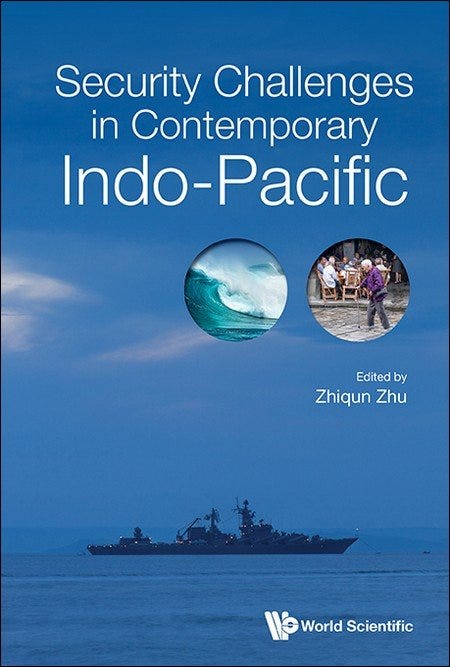LNG Behemoth and the Paradox of the Energy Plan
My chapter and presentation on the history of Japan’s LNG strategy; New article on the “un-ambitiousness” and “fantasy” of the 7th Strategic Energy Plan
Long-time readers of Power Japan know the massive role that Japan plays in the global liquefied natural gas (LNG) industry.
Japan was the biggest LNG importer in the world until 2023, when China surpassed its import volumes. Inevitable, perhaps, given Japan’s declining population, renewables deployment and nuclear restarts.
But Japan continues to rely heavily on LNG, aggressively invests in overseas LNG projects and signs LNG deals with foreign companies and governments.
Why?
Until recently, the answer was simple — to ensure a secure supply of the fuel. In the narrative of Japan’s bureaucracy-energy-industrial complex, LNG is a low-carbon fuel that can be procured from a wide range of suppliers and whose infrastructure is already mature.
But today, we need to add more to this answer. Yes, Japan is a big LNG consumer. But its deals and investments abroad go way beyond simply importing more LNG into Japan. Stephen Stapczynski, Spe Chen, and Jin Wu wrote an astonishing piece in Bloomberg Green last August detailing how Japan “built a global natural gas empire.” They document how vessels owned by Japanese companies literally make LNG go around the world and how Japanese firms — from banks, insurers, engineers, steelmakers, not to mention general trading houses — massively invest in and profit from every part of the global LNG supply chain from financing down to gas turbines.

That Japan has stakes in the global LNG industry means that it stands to benefit further as more countries, especially developing economies facing energy security challenges, turn to gas and LNG as part of their “clean” energy transition strategies. This explains why Japanese companies that are some of the world’s biggest LNG buyers keep entering into long-term contracts with suppliers, even though domestic demand is on the decline. They’re now aiming to re-sell the excess shipments to countries that are switching from coal to gas. Stapczynski et al pointedly ask: “Energy Security or Export Drive?”
All of this, and then some, was bouncing around in my head when Bucknell University’s Professor of Political Science and International Relations Dr. Zhiqun Zhu invited me early last year to write a chapter on Japan’s energy security for a book he was editing.

The final product, *Security Challenges in Contemporary Indo-Pacific,* was published just last week. My chapter “Liquefied Natural Gas on a Razor's Edge: Japan's Energy Security in a Tumultuous World” traces the evolution of Japan’s LNG strategy and its role in the world from the 1970s to the present.
I make 3(ish) points in the chapter:
Japan has successfully adjusted its LNG strategy to navigate global, regional, and domestic challenges since the 1970s
Japan’s LNG strategy has been largely unfazed by recent global shocks, most notably Russia’s war on Ukraine
Japan is is now shifting from being an LNG consumer to creating an LNG hub, especially in Asia
The publisher, World Scientific, kindly hosted a webinar to celebrate the book launch and asked contributors to give a short presentation of their chapters. You can see my bit here (please excuse the stripes of the glaring late afternoon sunlight on my face):
Long-time readers of Power Japan also know (in part, I’m sure, because I’ve been talking your ears off about it) that the Ishiba Cabinet approved the 7th Strategic Energy Plan on February 18.
I’ve written about parts of the plan over several weeks on this Substack. But more recently, I took a step back and took a high-level view of the plan’s targets. That’s what I wrote in my latest piece in Energy Tracker Asia.
The gist of the article is this: Parsing through expert commentaries on the energy plan, they say the targets in the plan are simultaneously unambitious and unfeasible.
How do we square this circle?
It’s unambitious because its renewable energy target is set at between 40-50% of the 2040 electricity mix, despite analysis showing that 80% or more is theoretically possible. Yes, aggressive investments in grid infrastructure, manufacturing, and workforce will be needed. But it’s possible if policymakers and companies get ambitious.
It’s unfeasible because it envisions nuclear energy to account for ~20% of the 2040 electricity capacity, more than doubling its share today. This, experts argue, is all but impossible given the time it takes for idled reactors to restart. Building new reactors is basically out of the question.
We can get deep in the weeds of specific policy fixes. But the lack of ambition regarding renewables and the lack of realism bordering on “fantasy” share the same roots: Japan’s energy policymaking structure that disproportionately empowers incumbent industries that favor nuclear and fossil fuels-related technologies.
There’s a growing chorus — both from environmental groups and within the hard-nosed energy experts — calling for fundamental reforms to this policymaking structure. It’s time to include, they say, diverse voices from outside the government-energy-industrial complex.
My article documents some of these voices. Check it out if you’re interested: https://energytracker.asia/japan-seventh-strategic-energy-plan/
That’s it for this long-winded announcement. Questions or comments? Let me know in the comments section or in the subscriber chat.
Also, I would love it if you would share Power Japan with the people in your life.




